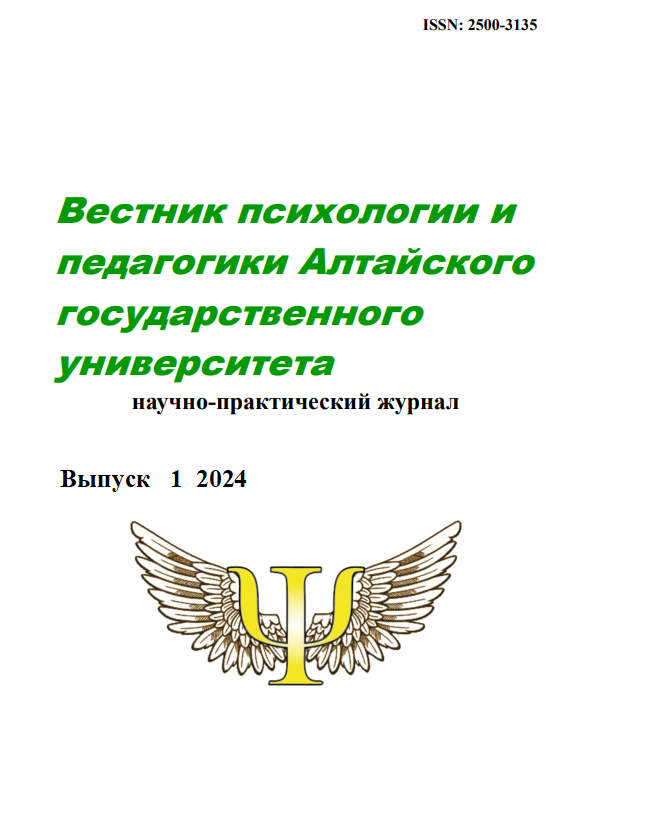EXAMINING THE PSYCHOLOGICAL FALLOUT OF COMBAT STRESS ON MILITARY PERSONNEL
УДК 159.9
Abstract
The article delves into how combat stress impacts the adaptive traits of military personnel in the aftermath of extreme situations. It focuses on the psychological aspects of combat-related challenges, analyzing the perspectives of A. G. Karayani, I. V. Syromyatnikov, L. A. Kitaev-Smyk, P.A. Korchemny, R.V. Kadyrova, and A.G. Maklakova. Emphasizing the importance of a structured psychological transition for combatants back to civilian life to mitigate posttraumatic stress disorders and maladjustment, the study conducted an empirical analysis. Various assessment tools were employed, including the Buss-Durkee hostility inventory (adapted by S.N. Enikolopov), I.I. Prikhodko’s method for psychological security diagnostics, K. Rogers and R. Diamond’s method for socio-psychological adaptation diagnosis, and J. Taylor's anxiety scale (adapted by V. G. Norakidze). Additionally, the study utilized the 'Spiritual Crisis' methods by L.V. Shutova and A.V. Lyashuk. The results shed light on the psychological aftermath of military personnel's involvement in combat situations during special military operations. While some servicemen successfully readjust to civilian life post-combat stress, others encounter challenges in adaptation.
Downloads
References
The article delves into how combat stress impacts the adaptive traits of military personnel in the aftermath of extreme situations. It focuses on the psychological aspects of combat-related challenges, analyzing the perspectives of A. G. Karayani, I. V. Syromyatnikov, L. A. Kitaev-Smyk, P.A. Korchemny, R.V. Kadyrova, and A.G. Maklakova. Emphasizing the importance of a structured psychological transition for combatants back to civilian life to mitigate posttraumatic stress disorders and maladjustment, the study conducted an empirical analysis. Various assessment tools were employed, including the Buss-Durkee hostility inventory (adapted by S.N. Enikolopov), I.I. Prikhodko’s method for psychological security diagnostics, K. Rogers and R. Diamond’s method for socio-psychological adaptation diagnosis, and J. Taylor's anxiety scale (adapted by V. G. Norakidze). Additionally, the study utilized the 'Spiritual Crisis' methods by L.V. Shutova and A.V. Lyashuk. The results shed light on the psychological aftermath of military personnel's involvement in combat situations during special military operations. While some servicemen successfully readjust to civilian life post-combat stress, others encounter challenges in adaptation
Bulletin of Psychology and Pedagogy of Altai State University is a golden publisher, as we allow self-archiving, but most importantly we are fully transparent about your rights.
Authors may present and discuss their findings ahead of publication: at scientific conferences, on preprint servers, in public databases, and in blogs, wikis, tweets, and other informal communication channels.
Bulletin of Psychology and Pedagogy of Altai State University allows authors to deposit manuscripts (currently under review or those for intended submission) in non-commercial, pre-print servers such as ArXiv.
Authors who publish with this journal agree to the following terms:
- Authors retain copyright and grant the journal right of first publication with the work simultaneously licensed under a Creative Commons Attribution License that allows others to share the work with an acknowledgement of the work's authorship and initial publication in this journal.
- Authors are able to enter into separate, additional contractual arrangements for the non-exclusive distribution of the journal's published version of the work (e.g., post it to an institutional repository or publish it in a book), with an acknowledgement of its initial publication in this journal.
- Authors are permitted and encouraged to post their work online (e.g., in institutional repositories or on their website) prior to and during the submission process, as it can lead to productive exchanges, as well as earlier and greater citation of published work (See The Effect of Open Access).







